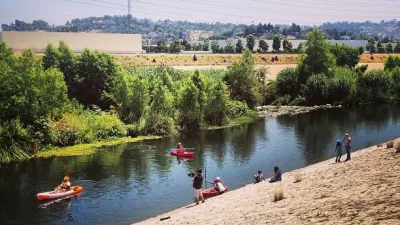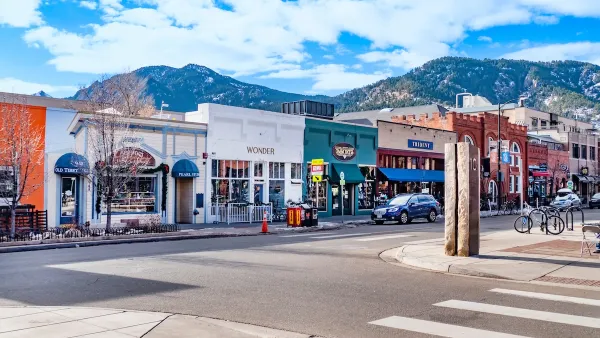The flood management story of Boulder, Colorado, includes a successful encounter with a 1,000-year rain event, and its lessons are less about concrete and dams than one might think.

Will Doig writes a detailed long read about the disparate experiences of last fall’s flooding in Colorado, when tried and true flood plan maps proved inadequate to the scale of a 1,000-year rain event, but a more subtle approach to flood control proved successful.
Boulder escaped some of the brunt of the storm but also a lot of potential damage by “focusing not on large engineering solutions, but more on good land-use planning and stewardship.”
“The philosophy was clear: A light touch tends to be more effective than a heavy hand. For instance, in the bed of Boulder Creek, drop structures were created out of rocks where the elevation of the creek falls sharply — small waterfalls that concentrate the flow of the water inward to keep it from overflowing its banks. Similarly, placed at strategic points near the sides of the creek were jagged rocks called “rip rap” that disrupt the momentum of the flood. These mechanisms are still found in the creek today, many of them placed near bridges to try to tame the water where it might do the most structural damage.”
A lot of that philosophy comes from Boulder’s relationship with its waterway, according to David Driskell, Boulder’s executive director for community planning and sustainability: “We don’t do large trapezoidal concrete channels to try to protect life in a flood. We understand our creek is an amenity that people value the 99.9 percent of the time that it’s not flooding.”
FULL STORY: You Can’t Stop Urban Flooding

Maui's Vacation Rental Debate Turns Ugly
Verbal attacks, misinformation campaigns and fistfights plague a high-stakes debate to convert thousands of vacation rentals into long-term housing.

Planetizen Federal Action Tracker
A weekly monitor of how Trump’s orders and actions are impacting planners and planning in America.

In Urban Planning, AI Prompting Could be the New Design Thinking
Creativity has long been key to great urban design. What if we see AI as our new creative partner?

King County Supportive Housing Program Offers Hope for Unhoused Residents
The county is taking a ‘Housing First’ approach that prioritizes getting people into housing, then offering wraparound supportive services.

Researchers Use AI to Get Clearer Picture of US Housing
Analysts are using artificial intelligence to supercharge their research by allowing them to comb through data faster. Though these AI tools can be error prone, they save time and housing researchers are optimistic about the future.

Making Shared Micromobility More Inclusive
Cities and shared mobility system operators can do more to include people with disabilities in planning and operations, per a new report.
Urban Design for Planners 1: Software Tools
This six-course series explores essential urban design concepts using open source software and equips planners with the tools they need to participate fully in the urban design process.
Planning for Universal Design
Learn the tools for implementing Universal Design in planning regulations.
planning NEXT
Appalachian Highlands Housing Partners
Mpact (founded as Rail~Volution)
City of Camden Redevelopment Agency
City of Astoria
City of Portland
City of Laramie





























